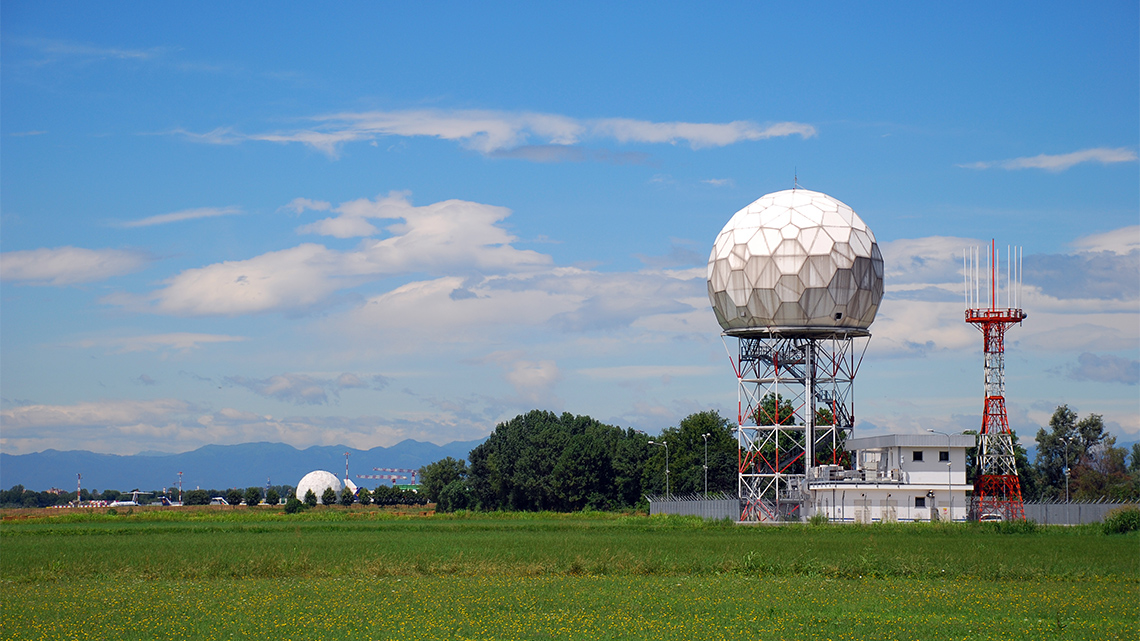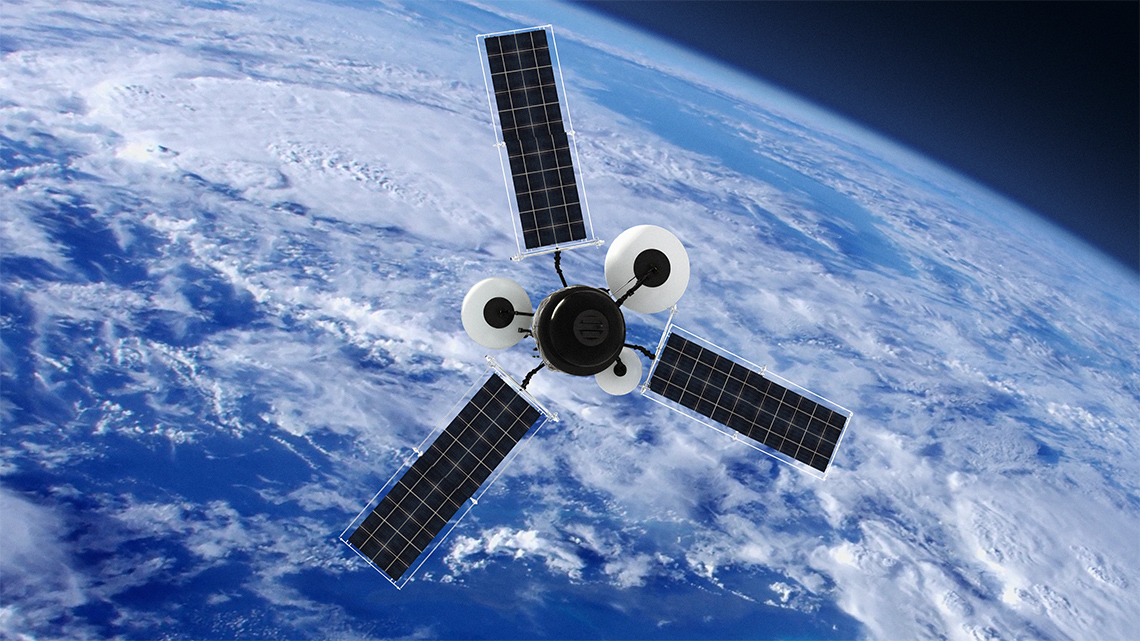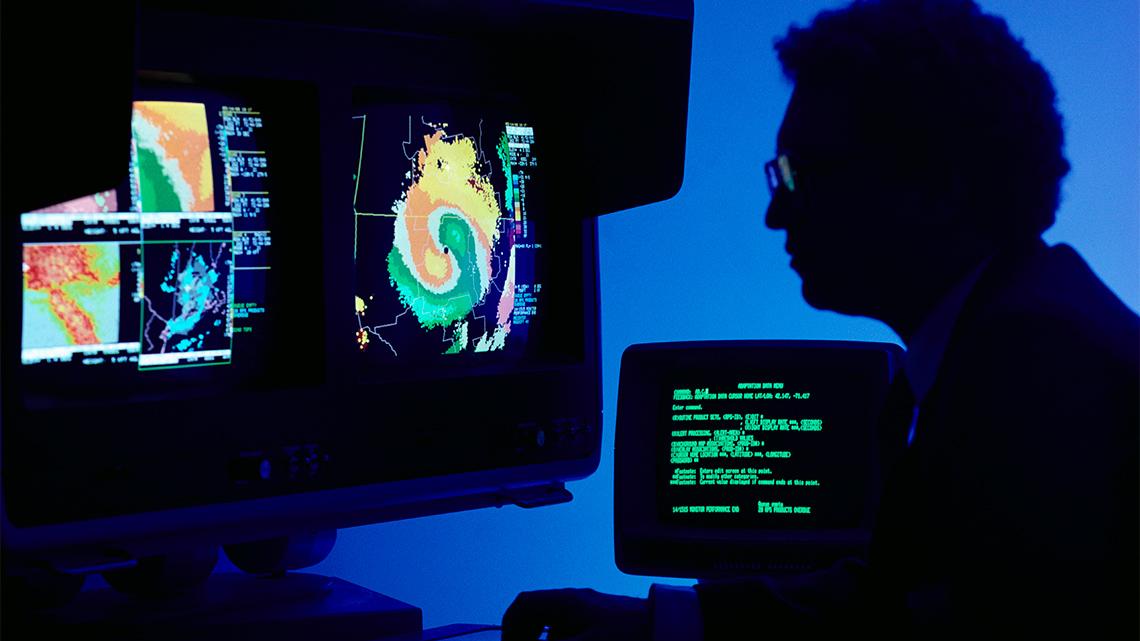Minds On
Preparing for weather
In this learning activity, you will be exploring extreme weather and how to predict and prepare for extreme weather events.
Brainstorm
Extreme weather
- What do you think is meant by extreme weather?
- What forces from an extreme weather event might impact a structure?
Record your brainstorm using a method of your choice.
A weather forecast is a prediction of the weather. Explore the following image of a 7-day weather forecast.

7-day weather forecast
A 7-day weather forecast. Each day has a predicted high temperature and low temperature. Each day also has a weather symbol and a description.
Monday: Partly cloudy with a high of 0 degrees and low of 3 degrees.
Tuesday: Partly cloudy with a high of -2 degrees and a low of -4 degrees.
Wednesday: Showers and wind with a high of 4 degrees and a low of 1 degree.
Thursday: Rain and snow showers with a high of 2 degrees and a low of -5 degrees.
Friday: Snow showers with a high of -3 degrees and a low of -6 degrees.
Saturday: Mostly cloudy with a high of -1 degrees and a low of -6 degrees.
Sunday: Mostly cloudy with a high of -2 degrees and a low of -6 degrees.
- What information can you gather from a weather forecast?
- What is the weather going to be like over the next week?
- If possible, explore the 7-day forecast for where you live. What will the weather be like in your area over the next week?
Record your responses using a method of your choice.
Action
Climate & weather
Weather and climate are two different things.
Explore the following carousel to learn more about the difference between climate and weather.
We have learned that weather is the temporary temperature and conditions outside, and that climate is the usual weather conditions in a specific area over a long time.
Climate change
Climate change describes the change in conditions – such as temperature and rainfall – in a region over a long period of time. Earth’s climate has constantly been changing, but lately, it’s been a little unusual. For example, Earth’s temperature has been increasing, or going up, much more quickly than usual. These changes are causing extreme weather events.
Explore the following TVOkids video entitled “David Suzuki Part 2” to learn more about how climate change is impacting weather events.
Based on what we learned in the previous video, answer the following true or false questions.
Extreme weather
As David Suzuki explained in the video we explored, some of our weather events are becoming more extreme because of climate change. Extreme weather can cause a lot of damage.
Press the following tabs to check out tornadoes, hurricanes, and lightning!
A tornado is a rotating column of air that extends from a thunderstorm. Tornados can cause a lot of damage to large buildings, trees, and many other objects.
Check out the following ScienceXplosion video entitled “A Tornado in a Bottle” to learn more about how tornados form and observe Eric make his very own!
A hurricane is a huge storm and can be very destructive. Sometimes a hurricane can last for more than a week and move over the open ocean. When they get too close to the coast and land, they will push water onto the land which causes damage and major flooding.
Explore the following Finding Stuff Out video entitled “Wild Water” to investigate how hurricanes form.
Lightning is a bright flash of electricity produced by a thunderstorm. If there’s thunder, there is also lightning! Inside a thundercloud (way up in the sky) there are small frozen raindrops that move around and bump into each other. As they bump into each other, they create an electrical charge. This electric charge is different from the one on the ground and when the two charges run into each other – lightning strikes!
Access the following video to observe some lightning in a thunderstorm!
Check your understanding!
So, what if climate change is causing these extreme weather events, then what is causing climate change? Human activities are contributing to climate change in the following ways:
- the exhaust or emissions from driving a car
- cutting down trees
- using too much water
- using too much electricity
- pollution (air, water, and land)

Based on this list, can you brainstorm any ways that humans can help to reduce the effects of climate change, and therefore reduce the risk of extreme weather events? Using the list above, brainstorm one way that humans could lessen this effect. For example, if exhaust or emissions from driving a car are contributing, then one idea could be carpooling or taking a bus instead.
Complete the Reducing Effects of Climate Change worksheet in your notebook or using the following fillable and printable document. If you would like, you can use speech-to-text or audio recording tools to record your thoughts.
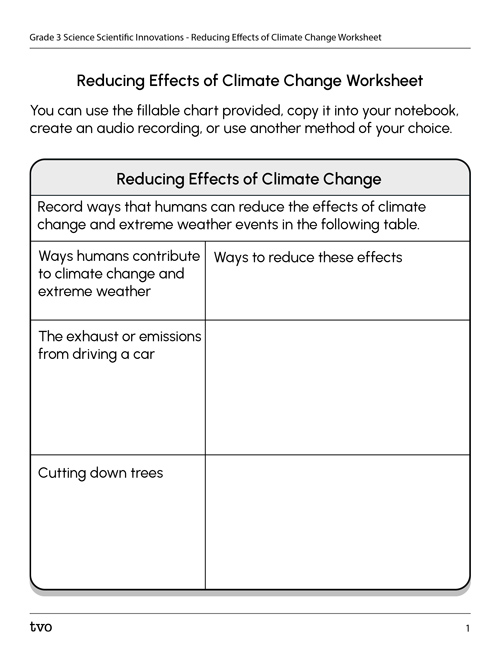
Press the Activity button to access the Reducing Effects of Climate Change Worksheet.
Activity (Open PDF in a new window)You can use the fillable chart provided, copy it into your notebook, create an audio recording, or use another method of your choice.
Now, compare your ideas with the ones below.
Press ‘Answers’ to access some possible answers.
|
Ways humans contribute to climate change and extreme weather |
Ways to reduce these effects |
|---|---|
|
The exhaust or emissions from driving a car |
|
|
Cutting down trees |
|
|
Using too much water |
|
|
Using too much electricity |
|
|
Pollution (air, water, and land) |
|
Predicting extreme weather
Sometimes extreme weather can be predicted. By exploring patterns of where and when different extreme weather occurred in the past, we can predict the most likely times and places that it will happen again.
Collecting data about temperature, air pressure, and wind speed are very important. Extreme weather data is very important because it can be used to help predict extreme weather in the future. Scientists can even use computer programs and coding to study movements in clouds. They can program their computer to recognize the movements and patterns that come with extreme weather.
Extreme weather events need to be predicted so that people have time to take shelter or move to places of safety.
Tools for predicting extreme weather
There are many different technological instruments that are used to predict extreme weather events. Explore the following carousel of tools!
So, now that you know what technologies can be used to predict extreme weather, you might be wondering – who does all this work?
Well, meteorologists across the world get to predict some of the most extreme weather events. Meteorologists track things like air pressure, wind, temperature, weather patterns, and extreme weather events.
Check out the following When I Grow Up video entitled “Meteorologist” to learn more about what meteorologists do!
Preparing for extreme weather
Now that you know how to predict extreme weather events, it is important to know how to prepare and repair structures if there is an extreme weather event in the forecast.
Extreme weather can be damaging, and unfortunately, we can’t always prevent it from happening. However, we can try to reduce its impact by being prepared.
Preparing and repairing structures
When designing a structure, an engineer explores how they can make the structure stronger and more stable.
A structure’s stability can be described as its ability to keep its shape, maintain balance, float, or stay in one fixed spot when a force is applied. Engineers develop new innovations to help protect people from extreme weather events. An innovation is a new invention and/or building method that reduces the effect of extreme weather.
Press the following tabs to check out extreme weather innovations!
Engineers have designed homes with roofs that can stand up to very high and strong winds. These are called hip roofs which have sides that are slanted up and are stronger and more stable than a flat roof. Because the sides are slanted, they deflect the wind, or push it up, instead of having it hit directly against the side. The slope of the roof allows water and snow to run off the sides which avoids leaking or flooding.

Hip roof
Engineers designed lightning rods to avoid lightning from damaging homes. Lightning rods are made out of metal, and therefore, they can transfer the energy of a lightning bolt through the rod and straight to the ground, instead of through the home or building. A lightning rod keeps a structure strong and safe because it decreases the likelihood that lightning will cause a fire, electrical surge, or explosion.
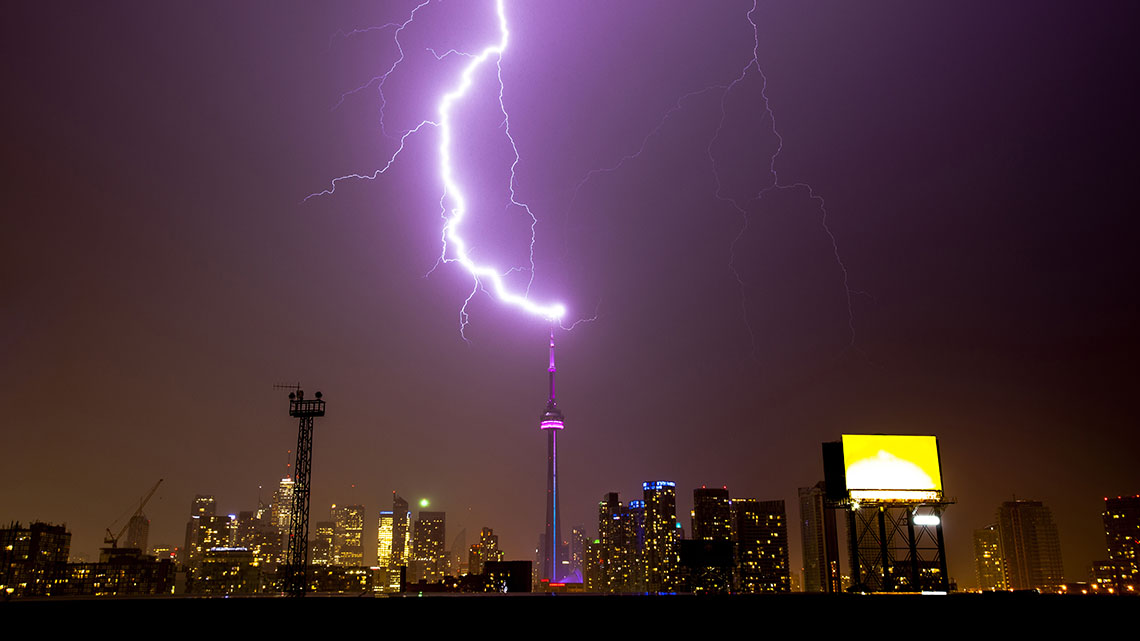
Lightning rod
There are some areas in the world that experience more storms than other areas. Engineers design homes to withstand these storms, such as hurricanes. When designing a home for a hurricane, engineers use stronger materials, such as concrete and metal. For example, instead of using wood braces, they use metal ones. Houses are built higher off the ground to avoid the flooding that follows a hurricane.

The Horizon house by Ezra Smith Designs, a home made of concrete and metal braces to withstand hurricanes (near Mexico Beach, Florida).
Along with the design of the structure, engineers also use specific materials that are designed to resist extreme weather and help a structure maintain its strength and stability. Learn more about these materials below.
Consolidation
Show what you know!

There was a lot of information in this learning activity. Use the matching activity to check your understanding of key concepts.
In the following Matching activity, choose the word that best fits the image!
What do you think?
Answer the following questions using a method of your choice!
- What is an example of an extreme weather event? How could an extreme weather event impact a structure?
- What technologies are used to predict extreme weather events? Why is it important to be able to predict these events?
- How can computer programs and coding be used to predict extreme weather events?
- What should an engineer consider when preparing a building or structure for an extreme weather event? Give specific examples of materials and design elements they should consider.
- How can humans help to prevent climate change and therefore reduce the risk of extreme weather?
Reflection
How do you feel about what you have learned in this activity? Which of the next four sentences best matches how you are feeling about your learning? Press the button that is beside this sentence.
I feel…
Now, record your ideas about your feelings using a voice recorder, speech-to-text, or writing tool.





